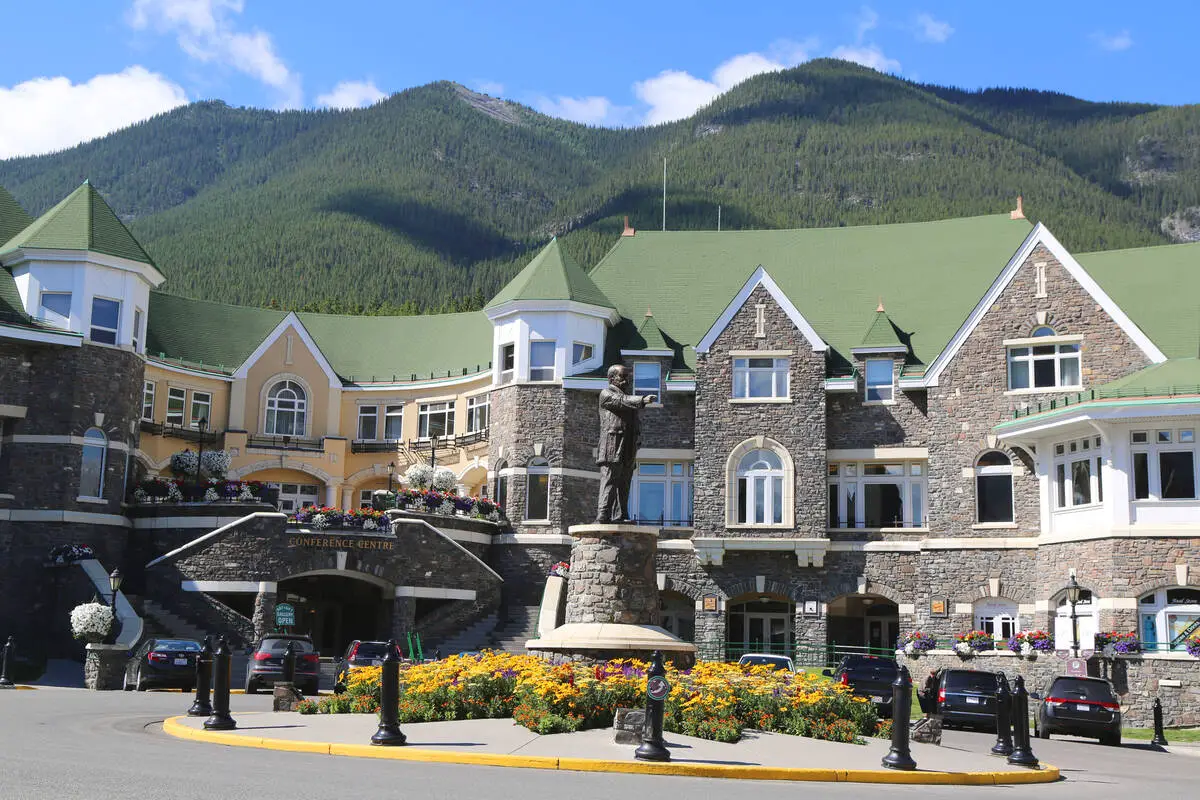As Canada’s oldest and most iconic national park, Banff has a rich history that spans centuries. Many people have played a significant role in shaping the park into what it is today. I listed the most prominent persons in the park’s history in this post.
This post helps you understand the impact certain persons have had on the park, such as why a William Cornelius Van Horne statue is located at the Fairmont Banff Springs Hotel (see the photo at the top of this article).
I also included some of the Indigenous Peoples, and settlers who explored the Canadian Rockies in the 1800s on horseback as they played a pivotal role in discovering what is now Banff National Park.
Their efforts paved the way for the Grand Pacific Railroad, which proved crucial for the creation of Banff National Park.
Let’s dive in!
Indigenous Peoples
The Indigenous Peoples have lived in the Banff region for nearly 11,000 years. Their rich history, culture, and spiritual beliefs are deeply connected to the land. While there are more, especially the Stoney Nakoda Nation and the Blackfoot Confederacy have a significant presence in Banff National Park.
Stoney Nakoda Nation
The Stoney Nakoda Nation is a group of Indigenous Peoples who have lived in the Rocky Mountains for thousands of years. Its traditional territory includes the eastern slopes of the Rocky Mountains.
The Stoney Nakoda Nation has played an important role in protecting the natural environment of Banff National Park through its efforts to preserve its traditional ecological knowledge.
They were also involved in substantial conservation efforts, such as reintroducing bison to the park. The Stoney Nakoda Nation provided traditional ecological knowledge and expertise to help ensure the success of the reintroduction.
The Stoney Nakoda Nation has also been involved in other conservation projects, such as protecting essential wildlife habitats and restoring degraded ecosystems in the park.
Blackfoot Confederacy
The Blackfoot Confederacy is a group of Indigenous Peoples who have lived in the Great Plains for thousands of years. Its traditional territory includes the Rocky Mountains’ eastern slopes. It has a shared history and culture with the Stoney Nakoda Nation.
It also played an essential role in protecting the natural environment of Banff National Park by educating visitors about the history and culture of the Indigenous Peoples in the area.
Explorers and Surveyors
When Banff National Park was established in 1885, it remained largely unexplored and unmapped. Over the years, several explorers and surveyors played a crucial role in discovering and documenting the park’s natural features. Here are some of the most influential figures in the history of Banff National Park:
George Simpson (1792-1860)
George Simpson was a fur trader and explorer who worked for the Hudson’s Bay Company in the early 1800s. He was one of the first European explorers to visit the Banff area, and his journals and maps provide some of the earliest written records of the region.
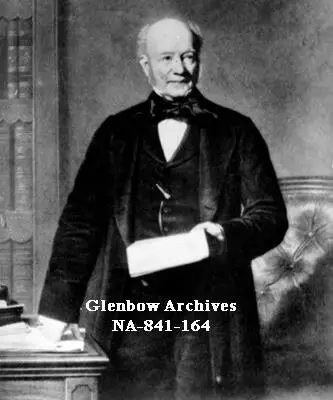
Simpson’s work helped establish the area’s importance for fur trading and exploration. The Simpson Pass and the nearby Simpson River in British Columbia are named after him.
John A. MacDonald (1815-1891)
John A. MacDonald, Canada’s first Prime Minister, played a critical role in the creation of Banff National Park. In 1883, MacDonald visited the area and was impressed by the region’s natural beauty. He recognized the potential of the land for tourism.
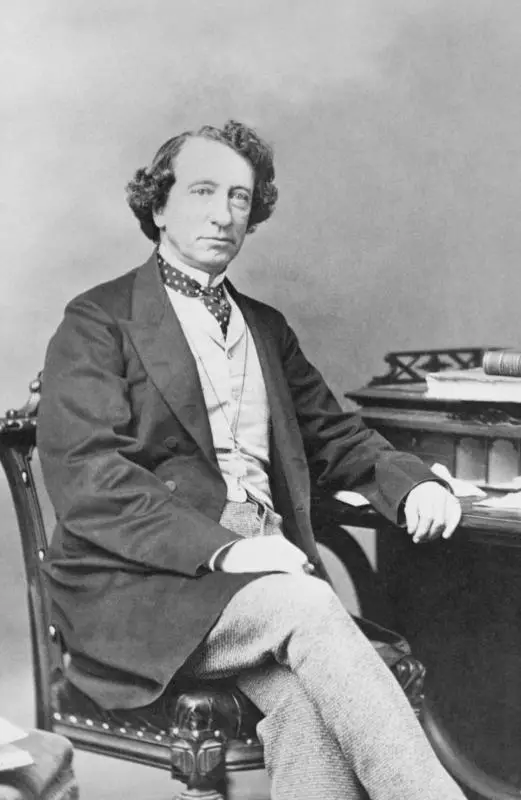
He set aside a small reserve of 26 square kilometers (10 sq mi) around the hot springs at Cave and Basin as a public park known as the Banff Hot Springs Reserve in 1885. This was the beginning of Banff National Park.
MacDonald’s vision for Banff National Park was to create a place where people could come and enjoy the area’s natural beauty while preserving it for future generations. He believed the park would become a major tourist destination and help promote Canada’s image as a land of natural beauty.
Under MacDonald’s leadership, the Canadian government established the first national park system in the world, and Banff National Park was the first park in this system. MacDonald’s vision for Banff National Park has been realized. It is now one of the world’s most visited and beloved national parks.
James Hector (1834-1907)
James Hector was a Scottish geologist and naturalist in the Palliser Expedition, a scientific survey of western Canada in the 1850s. Hector mapped much of the Bow River valley, including the area that would later become Banff National Park.
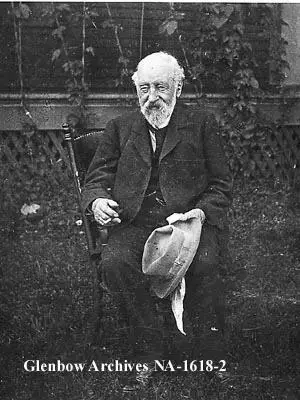
His detailed observations of the region’s geology and wildlife played a crucial role in establishing the area’s scientific importance.
Hector Lake along the Icefields Parkway is named after him.
George Mercer Dawson (1849-1901)
George Mercer Dawson was a geologist and surveyor who worked for the Canadian Geological Survey in the late 1800s. He mapped much of the Rocky Mountains in western Canada, including Banff National Park.
Dawson’s work helped establish the region’s geological history and was crucial in the park’s development.
Tom Wilson (1859-1933)

Tom Wilson played a significant role in the early development of Banff National Park. He was a noted explorer, guide, and outfitter who operated a horse ranch at Kootenay Plains. Wilson famously showed William Cornelius Van Horne the location for the Banff Springs Hotel.
He is credited with discovering Lake Louise. Wilson’s knowledge of the area and his passion for the outdoors helped establish Banff National Park as a popular tourist destination and a model for national park management around the world.
Several landmarks and buildings in the area were named in his honor, including Mount Wilson, and the Tom Wilson Memorial Cairn in Lake Louise.
Walter Dwight Wilcox (1869-1949)
In 1893, American explorer Walter Dwight Wilcox led an expedition up the Bow Valley to the high peaks along the Continental Divide northeast of Lake Louise.
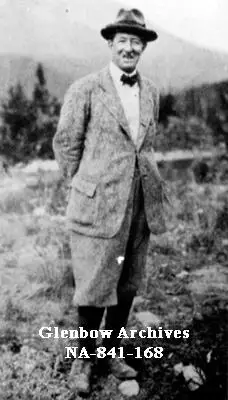
This journey marked the first time this route had been fully explored and documented. Wilcox’s detailed descriptions and photographs of the area helped to popularize Banff as a tourist destination.
Jim Brewster (1882-1947)
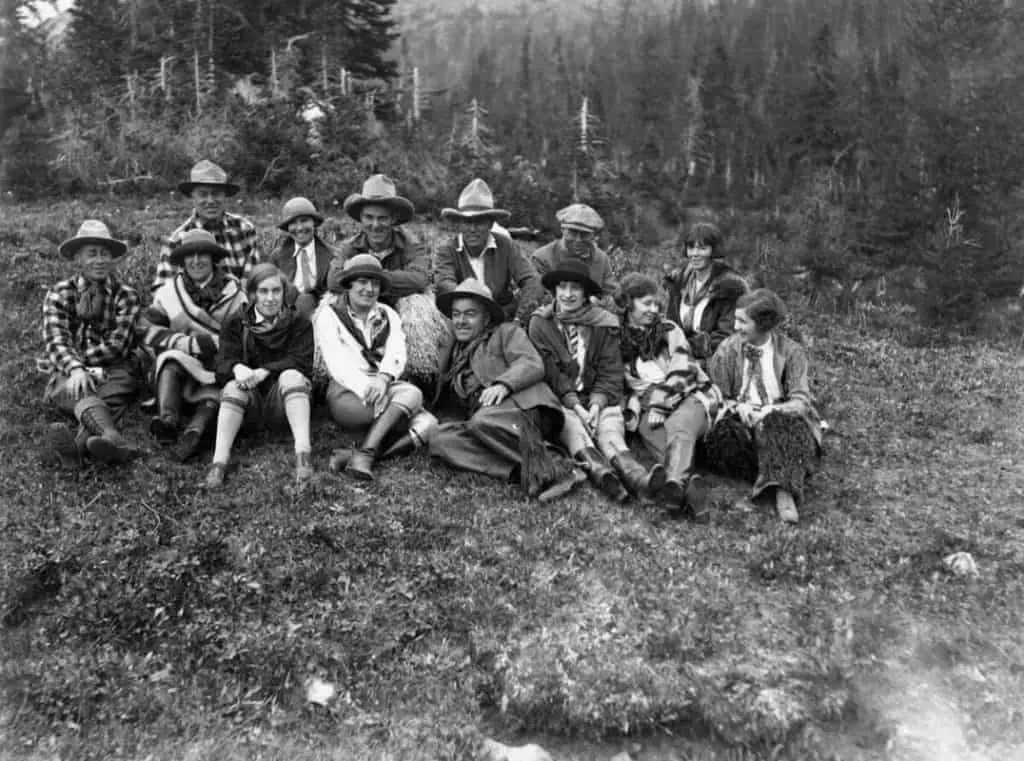
Jim Brewster was a guide and outfitter who worked in the Banff area in the late 1800s and early 1900s. He was responsible for leading many of the early expeditions into the park’s backcountry, and his knowledge of the area’s geography and wildlife was unmatched.
He went on to establish Brewster Transport, aimed at tourists visiting the park. Brewster’s work helped to establish Banff as a destination for outdoor recreation and adventure.
Railway Builders
In the late 19th century, the Canadian Pacific Railway (CPR) played a significant role in the development of Banff National Park. The railway builders were instrumental in promoting tourism in the area and establishing Banff as a popular destination. Some key figures are involved in constructing the CPR and developing Banff National Park.
Donald Alexander Smith (1820-1914)
Donald Alexander Smith (Lord Strathcona) was a Scottish-born businessman who played a crucial role in the construction of the CPR. He was also instrumental in the development of Banff National Park.
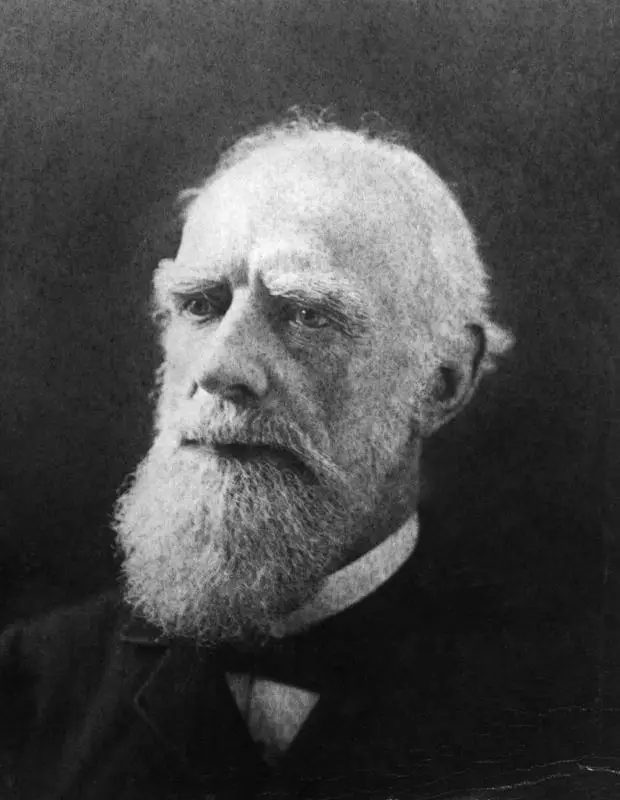
Smith was a member of the CPR’s board of directors and helped to secure funding for the railway’s construction. He also established Banff as a tourist destination and renamed Siding 29 to Banff in 1883 for his hometown Banff in Scotland.
George Stephen (1829-1921)
George Stephen was a Canadian businessman who played a significant role in the construction of the CPR. He was also involved in the development of Banff National Park.
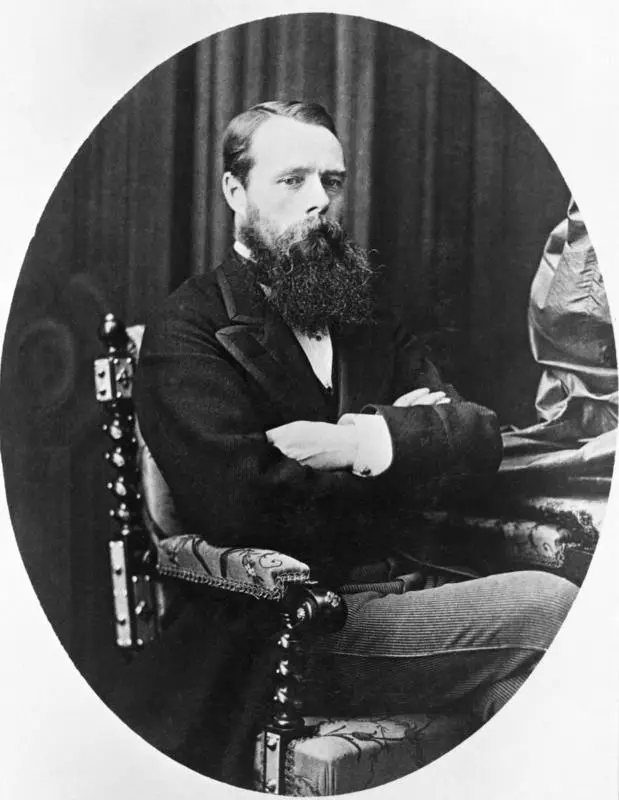
Stephen was the first president of the CPR (until 1888) and was responsible for overseeing the railway construction. He was also a strong supporter of Banff and believed that the park’s natural beauty could be used to attract tourists to the area.
William Cornelius Van Horne (1843-1915)
William Cornelius Van Horne was the general manager of the CPR from 1888 to 1899. He was responsible for overseeing the railway construction and played a significant role in the development of Banff National Park.
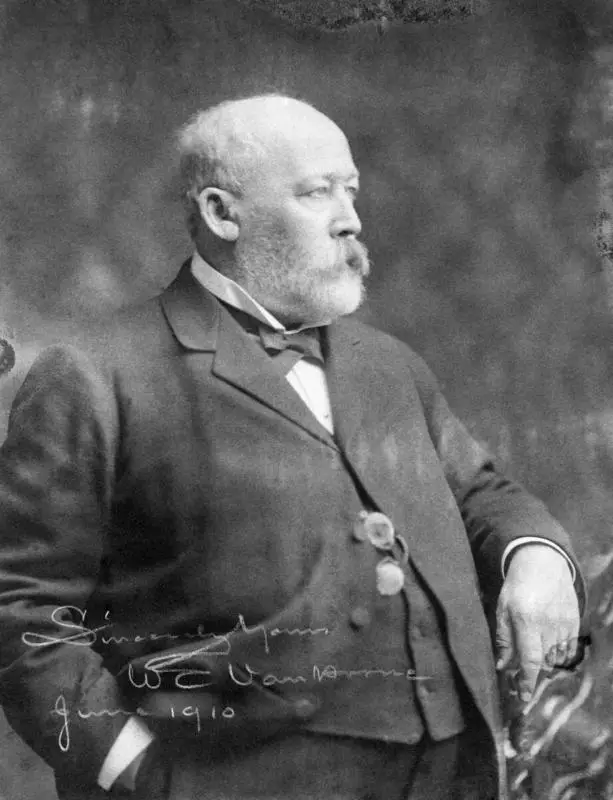
Van Horne was a visionary leader who understood the potential of Banff as a tourist destination. He believed the park’s natural beauty could attract visitors worldwide and worked hard to promote the area.
Conservationists and Park Builders
Banff National Park owes its existence to the efforts of several conservationists and park builders who recognize the need to protect the area’s natural beauty. Here are some of the most important figures in the history of Banff National Park:
George A. Stewart (1830-1917)
George A. Stewart played a significant role in developing Rocky Mountains Park (Banff National Park’s predecessor). Stewart was appointed as the park’s first superintendent in 1886.
During his tenure, he oversaw the development of the park’s infrastructure, including the construction of roads, trails, and buildings. He also worked to protect the park’s natural resources and promote it as a tourist destination.
Willoughby John Astley (1859-1948)
Willoughby John Astley built the chalet at Lake Louise (then known as “Laggan”) in 1890 as he had experience constructing this type of building. He had built the Beach House Hotel at Minnewanka Landing on Lake Minnewanka three years earlier.
After the construction of the chalet was finalized, the CPR appointed him the first manager of the chalet at Lake Louise.
Ebenezer William “Bill” Peyto (1869-1943)
Ebenezer William “Bill” Peyto played a significant role in the early development of Banff National Park in Alberta, Canada. Peyto led prominent British, Swiss and American climbers on multiple expeditions in the Canadian Rockies and became a warden of Banff National Park in 1913. He held this position until his retirement in 1937.
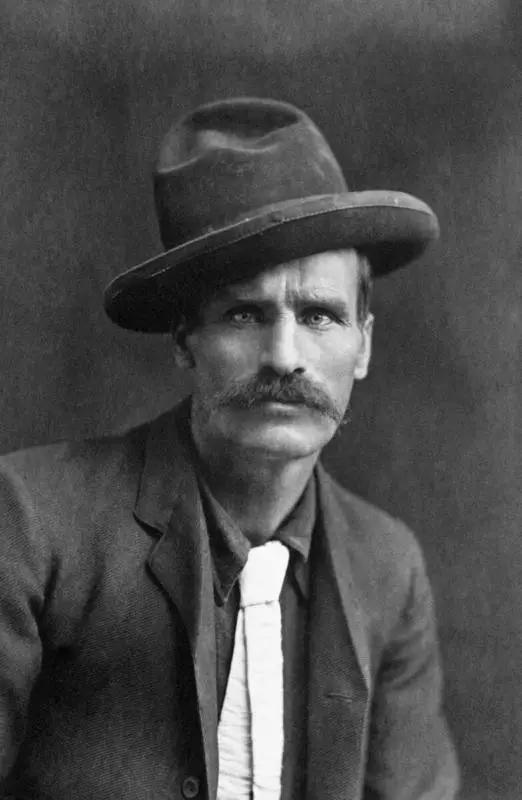
During this time, Peyto was responsible for managing and conserving the wilderness of the Canadian Rockies. Peyto was known for his unique style and approach to park management, which helped establish Banff National Park as a model for national park management around the world.
Peyto’s legacy in Banff is still felt today, with several landmarks and buildings in the area named in his honor. These include Peyto Lake, Peyto Glacier, Peyto Hut, and Bill Peyto’s Café inside HI Lake Louise Alpine Centre.
Peyto’s life and work have also been the subject of “Wild Bill: The Legend and Life of William Peyto” by Ted Hart.
Norman Luxton (1876-1962)
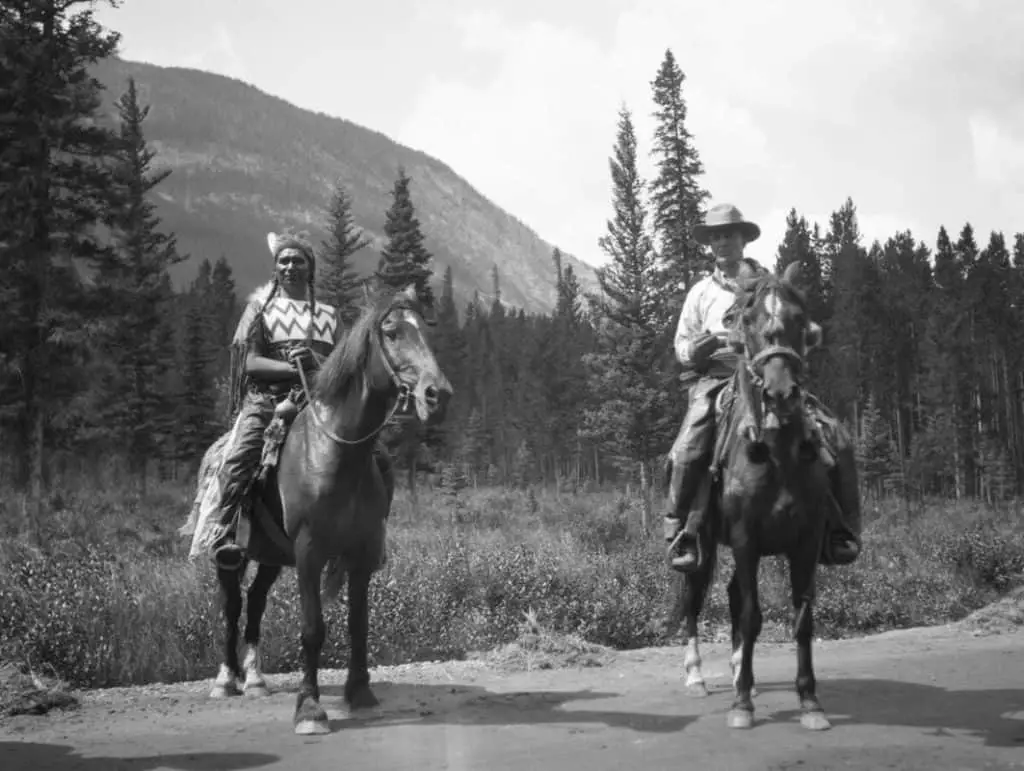
Norman Luxton, also known as “Mr. Banff”, was a prominent businessman in Banff, responsible for the Banff Indian Trading Post, a popular tourist attraction. He also published the newspaper Crag and Canyon to help promote the park.
Luxton was a strong advocate for the conservation of the natural environment of Banff. He recognized the importance of preserving the area’s unique ecosystem and worked to protect it from development and exploitation.
Norman Watson (1897-1983)
Sir Norman Watson, a British nobleman, played a significant role in the development of skiing at Lake Louise, Alberta. As an aircraft manufacturer, he spent several weeks every year at Lake Louise after World War I working on developing the ski resort.
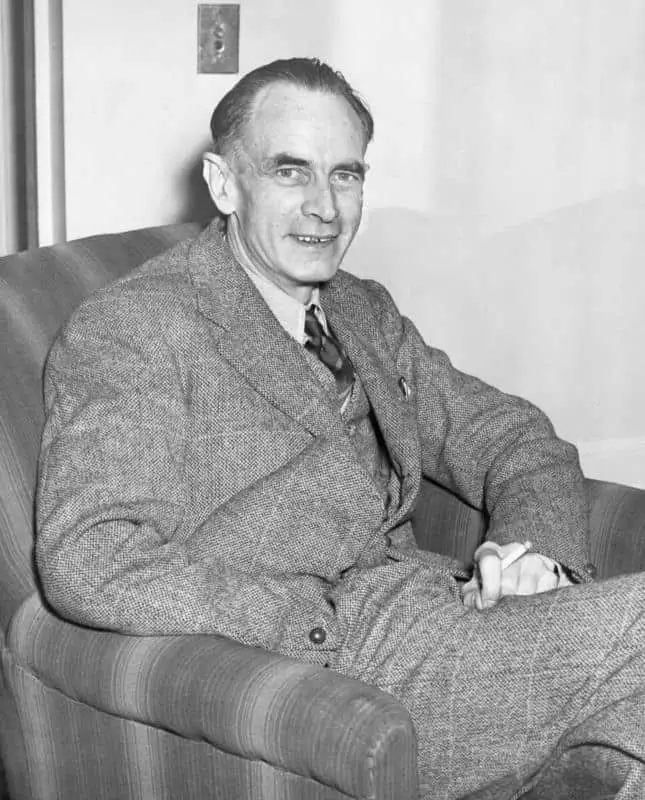
Watson, a major shareholder of the Ski Club of the Canadian Rockies, helped accelerate ski developments at Lake Louise, like funding a ski lift.
Watson’s contributions to the development of skiing at Lake Louise have had a lasting impact on the area. Today, Lake Louise is one of the most visited destinations in Canada, known for its skiing, hiking, and mountain climbing.
Architects
The architects who designed some of Banff National Park’s most beautiful buildings have greatly influenced its settlements, infrastructure and renowned hotels. Here are a few of the most important ones:
Thomas Charles Sorby (1836-1924)
Thomas Charles Sorby was a British architect who added a second story to the chalet and expanded its capacity.
The CPR hired him to replicate the Mount Stephen House, a hotel in the adjacent British Columbian town of Field, which he also designed. He added two wings to the chalet and a large veranda along the lakeside front.
Bruce Price (1845-1903)
Bruce Price was a prominent American architect who designed the Banff Springs Hotel, one of the most famous buildings in the park.
The hotel was built in 1888 and has since become an iconic landmark in the area. Price was known for using the Châteauesque style, characterized by steep roofs, turrets, and ornate details.
Francis Mawson Rattenbury (1867-1935)
Francis Mawson Rattenbury was a British architect who worked most of his career in British Columbia. He became famous for designing the Parliament Building in Victoria, British Columbia. However, he also significantly extended the Château Lake Louise, adding many guest rooms with lake views. He incorporated a lot of wood to fit the hotel with the surrounding forest.
He converted the old chalet into a sitting area with a massive stone fireplace, large windows, and a veranda overlooking the lake.
Rattenbury was known for using the Classical Revival style, which was popular in the early 20th century. This style uses classical motifs such as columns, pediments, and domes.
Walter Painter (1877-1957)
Walter Painter was a Canadian architect who designed several buildings in the park, including the Lake Louise Railway Station and the Banff Park Museum. In 1911 the CPR’s chief architect was appointed to develop a new design for the hotel, including the 11-story center tower, 59.5 meters tall (195 ft).
Painter was known for using the Rustic style, which was popular in the late 19th and early 20th centuries. This style is characterized by using natural materials such as wood and stone and incorporating local flora and fauna into the design.
Harold Champ Beckett (1890-1970)
Harold Champ Beckett played a significant role in designing and constructing the Administration Building in Banff National Park, Alberta. Built in 1935-1936, the building was the first representation of the federal government in the national parks.
Beckett made considerable effort to ensure the use of high-quality materials for both the exterior and interior of the building. Despite the difference in cost, he convinced park authorities that local sandstone should not be used in place of limestone for the exterior elevations.
The Administration Building is now a National Historic Site of Canada (since 2001) and a popular tourist destination in Banff National Park.
Stanley Thompson (1893-1953)
Stanley Thompson is known for designing the Banff Springs Hotel Golf Course. Thompson’s original design for the course, completed in 1928, featured 18 holes along the Bow River under the snow-capped peaks of Sulphur Mountain and Mount Rundle. In 1989, 9 holes were added, resulting in 27 holes of the championship layout.
Thompson’s course design incorporated the area’s natural surroundings, including the notorious Devil’s Cauldron. Each hole offers stunning views of the surrounding mountains and river.
The course has hosted several international golf events, including the Canadian Open.

